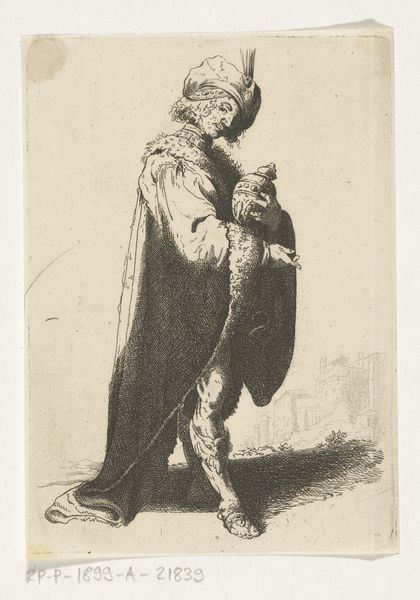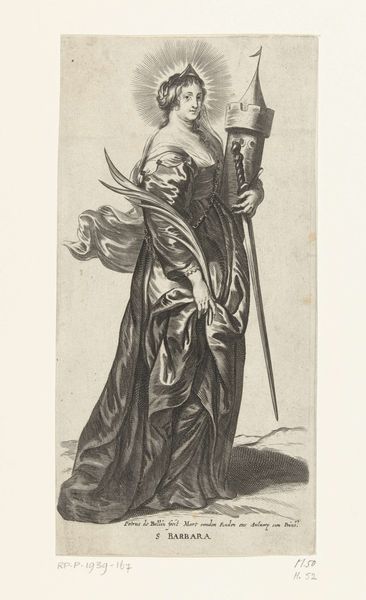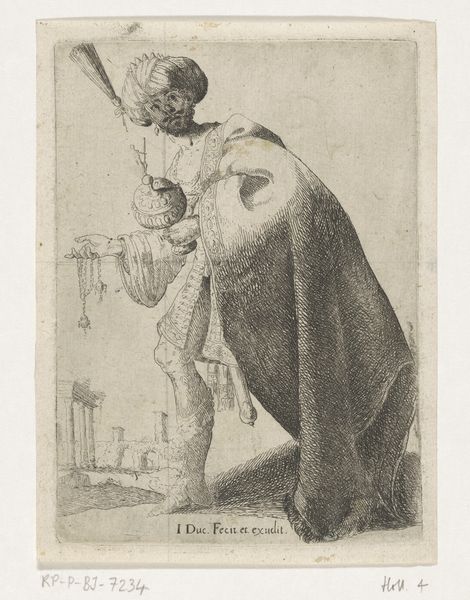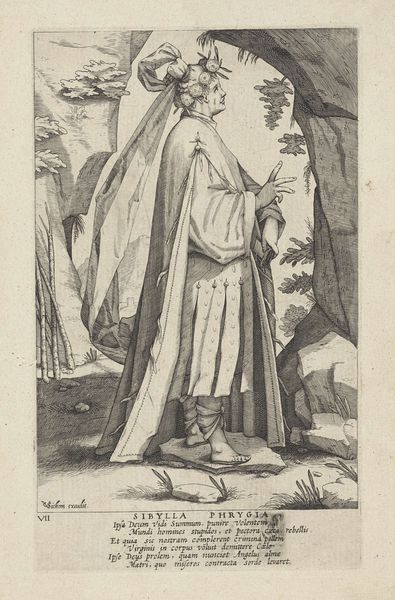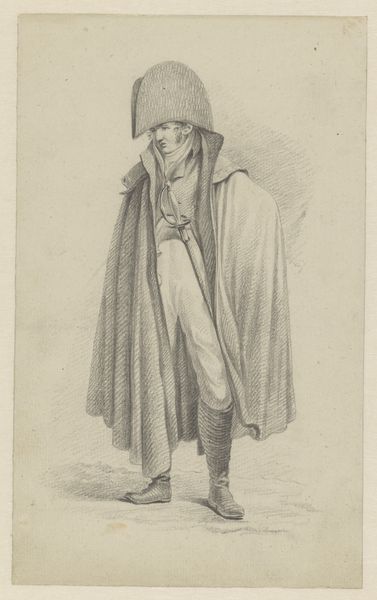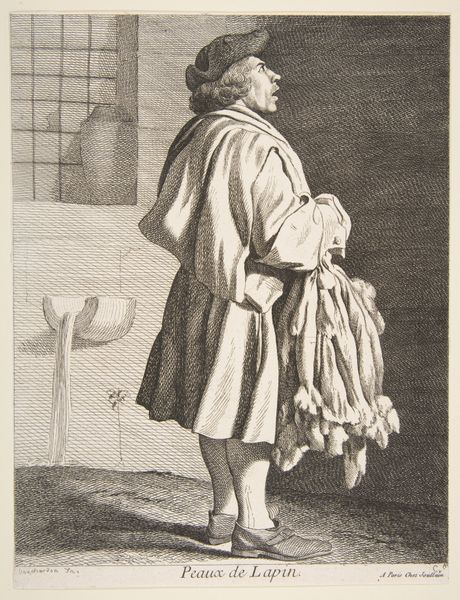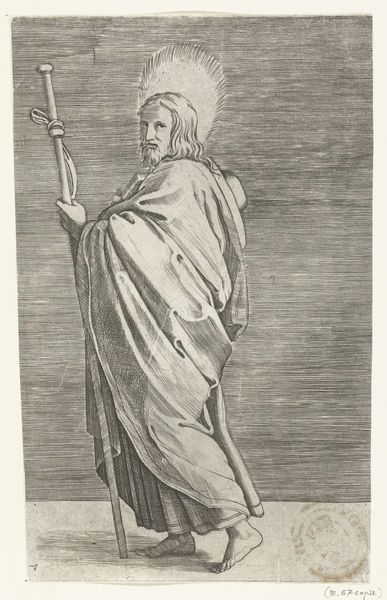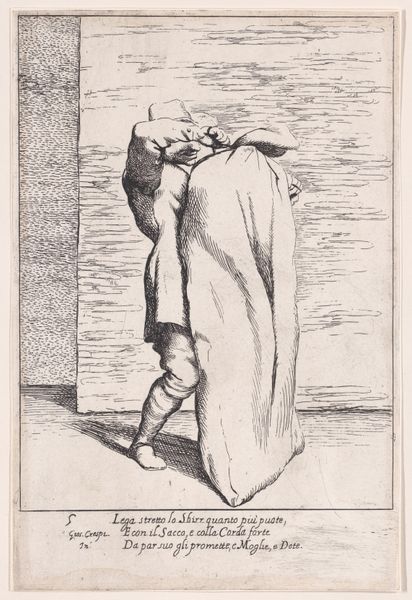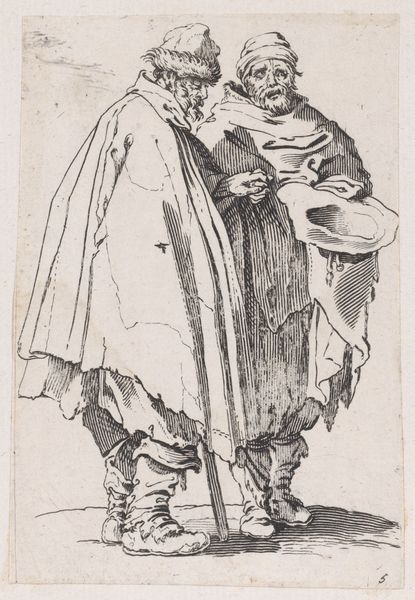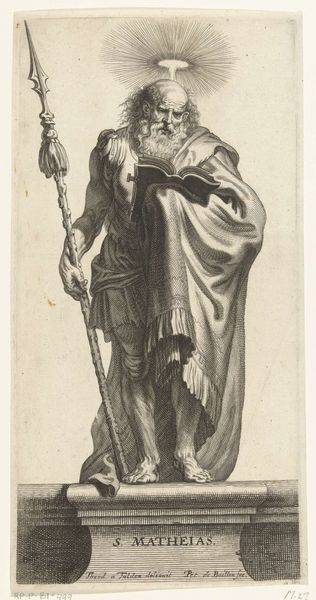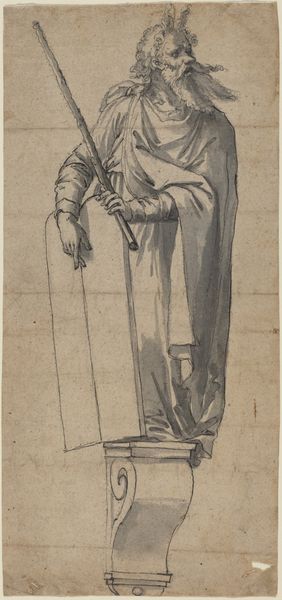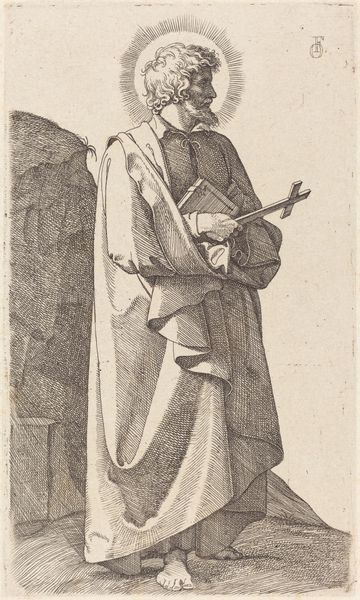
A Blind Man from the Quinze-Vingts Hospital 1738
0:00
0:00
drawing, print, engraving
#
portrait
#
drawing
#
baroque
# print
#
men
#
portrait drawing
#
genre-painting
#
engraving
Dimensions: Sheet: 9 3/16 x 6 15/16 in. (23.4 x 17.6 cm) Image: 8 11/16 x 6 7/8 in. (22 x 17.5 cm)
Copyright: Public Domain
Editor: This engraving, "A Blind Man from the Quinze-Vingts Hospital" by Anne Claude Philippe Caylus, dates back to 1738. I’m struck by the directness of the gaze of the shorter figure, particularly contrasted with the other’s aloof profile. What do you see in this piece? Curator: I see layers of cultural encoding within what seems like a simple genre scene. The "Quinze-Vingts" refers to a Parisian hospital specifically for the blind, deeply embedded in the city's identity. What do the differing statures suggest to you? Editor: Possibly a dynamic of power, or reliance? The smaller figure is looking outward while being guided. Curator: Precisely! The staff acts as both physical support and a symbolic link to the world. Blindness itself carried heavy symbolic weight, often representing ignorance or a loss of spiritual sight. Yet, paradoxically, it could also signify heightened inner vision, an idea prevalent since antiquity. Notice the cup: a universal symbol for charity and reliance, it reminds us that compassion also served as a status display among the noble class. Editor: So the act of giving was as important as the care provided? Curator: Context is key. Patronage and religious piety informed daily life, providing tangible means of displaying social rank and individual faith, with symbols reinforced and understood by every member of the public. Editor: That reframes the entire work; thank you for illuminating those layers. Curator: Indeed, seeing beyond the surface opens new perspectives into how deeply symbolic meaning could be embedded within what appears to be merely an everyday portrait.
Comments
No comments
Be the first to comment and join the conversation on the ultimate creative platform.
